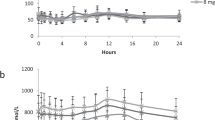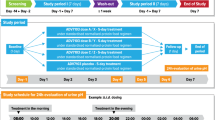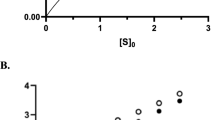Abstract
RECENT work on the kinetics of the acetylation of sulphisoxazole1 and sulphamethylthiadiazole2 in human beings indicate that excretion of acetylated drug is the terminal step in a two-step consecutive first-order process the first step of which is acetylation. This kinetic model was tested for ability to describe the metabolism and excretion of sulphathiazole taken by normal adult humans under a standard test procedure1. When 0.5-gm. doses were taken, excretion of acetylated drug was well described by the appropriate mathematical expression1,2. However, when one subject took a 1.0-gm. dose, it was not possible to describe the excretion of acetylated sulphathiazole by the same expression. The test was repeated with the same subject about two weeks later, and a water intake of about 500 ml./hr. maintained during the first 8 hr. of the test. This time excretion of the acetylated drug was well described by the expression. Using the rate constants obtained in the second test to calculate maximum excretion-rate of acetylated sulphathiazole by this subject from a 1.0-gm. dose, and comparison of this rate with the average urine flow-rate during the expected time of occurrence of the maximum during the first test, indicated that the solubility of acetylated sulphathiazole was exceeded at the average urine pH. It seemed reasonable to believe that crystalluria had occurred during the first test with a 1.0-gm. dose which would prevent description of excretion by the expression previously found to hold when a smaller dose was taken. There was no evidence of hæmaturia on casual gross examination of the urine specimens obtained in the first test with a 1.0-gm. dose.
This is a preview of subscription content, access via your institution
Access options
Subscribe to this journal
Receive 51 print issues and online access
$199.00 per year
only $3.90 per issue
Buy this article
- Purchase on Springer Link
- Instant access to full article PDF
Prices may be subject to local taxes which are calculated during checkout
Similar content being viewed by others
References
Nelson, E., and O'Reilly, I., J. Pharmacol. Exp. Therap., 129, 368 (1960).
Nelson, E., and O'Reilly, I., J. Pharm. Sci. (in the press).
Krebs, H. A., and Speakman, J. C., Brit. Med. J., i, 47 (1946).
Bandelin, F. J., and Malesh, W., J. Amer. Pharm. Assoc., Sci. Ed., 48, 177 (1959).
Author information
Authors and Affiliations
Rights and permissions
About this article
Cite this article
NELSON, E. Minimum Rates of Flow in Therapy with Sulphonamides. Nature 189, 928–929 (1961). https://doi.org/10.1038/189928a0
Issue Date:
DOI: https://doi.org/10.1038/189928a0
Comments
By submitting a comment you agree to abide by our Terms and Community Guidelines. If you find something abusive or that does not comply with our terms or guidelines please flag it as inappropriate.



